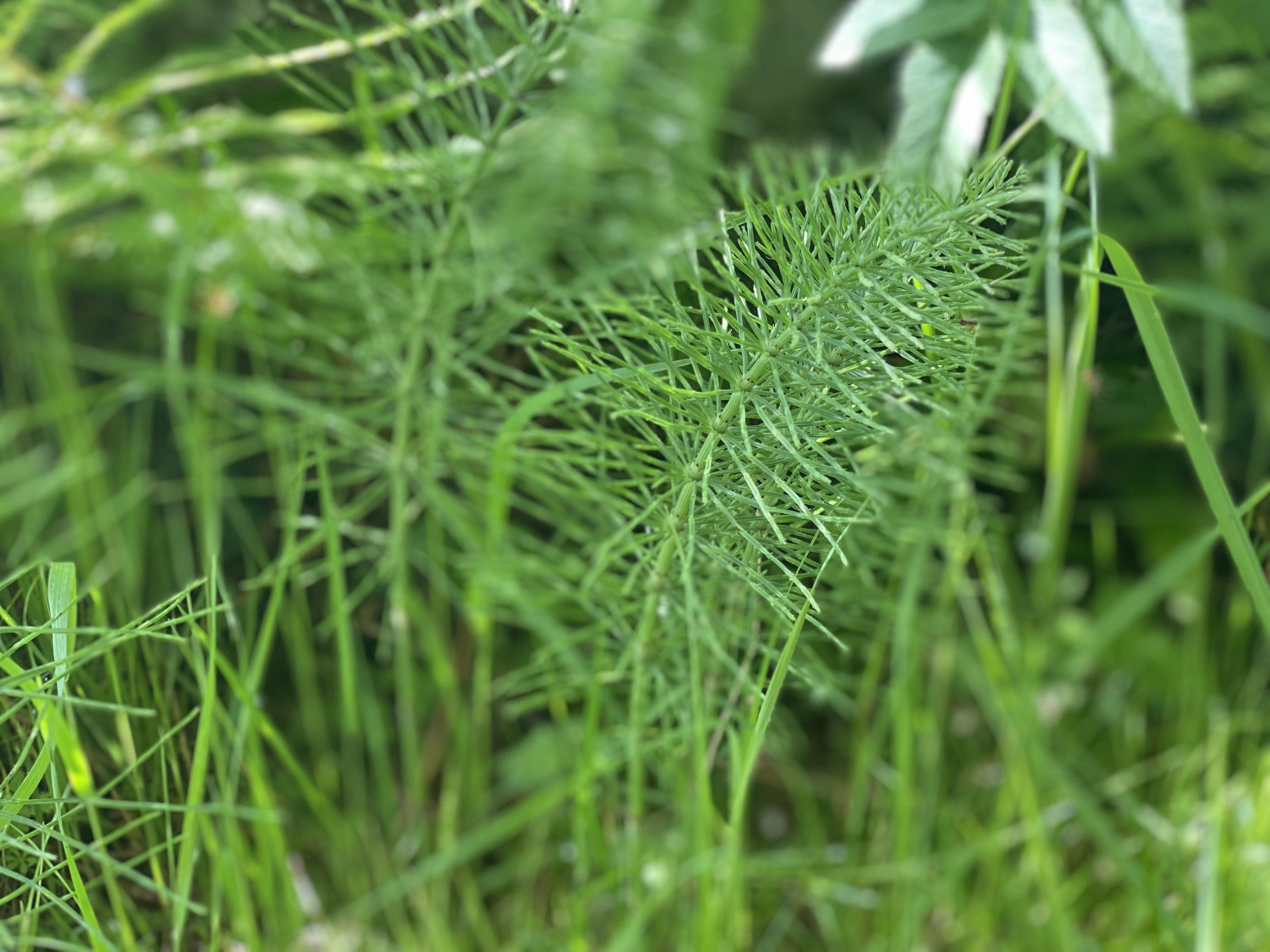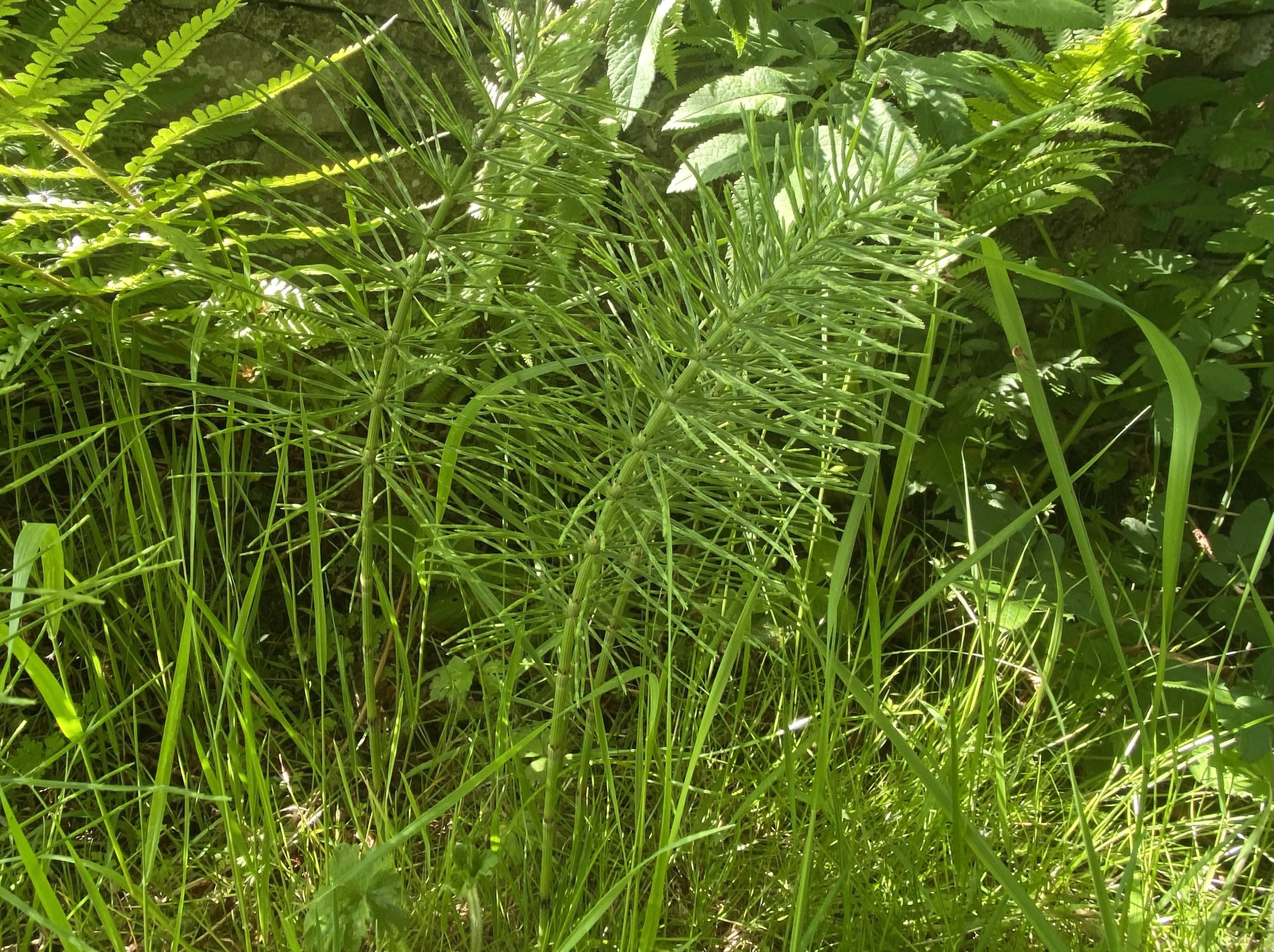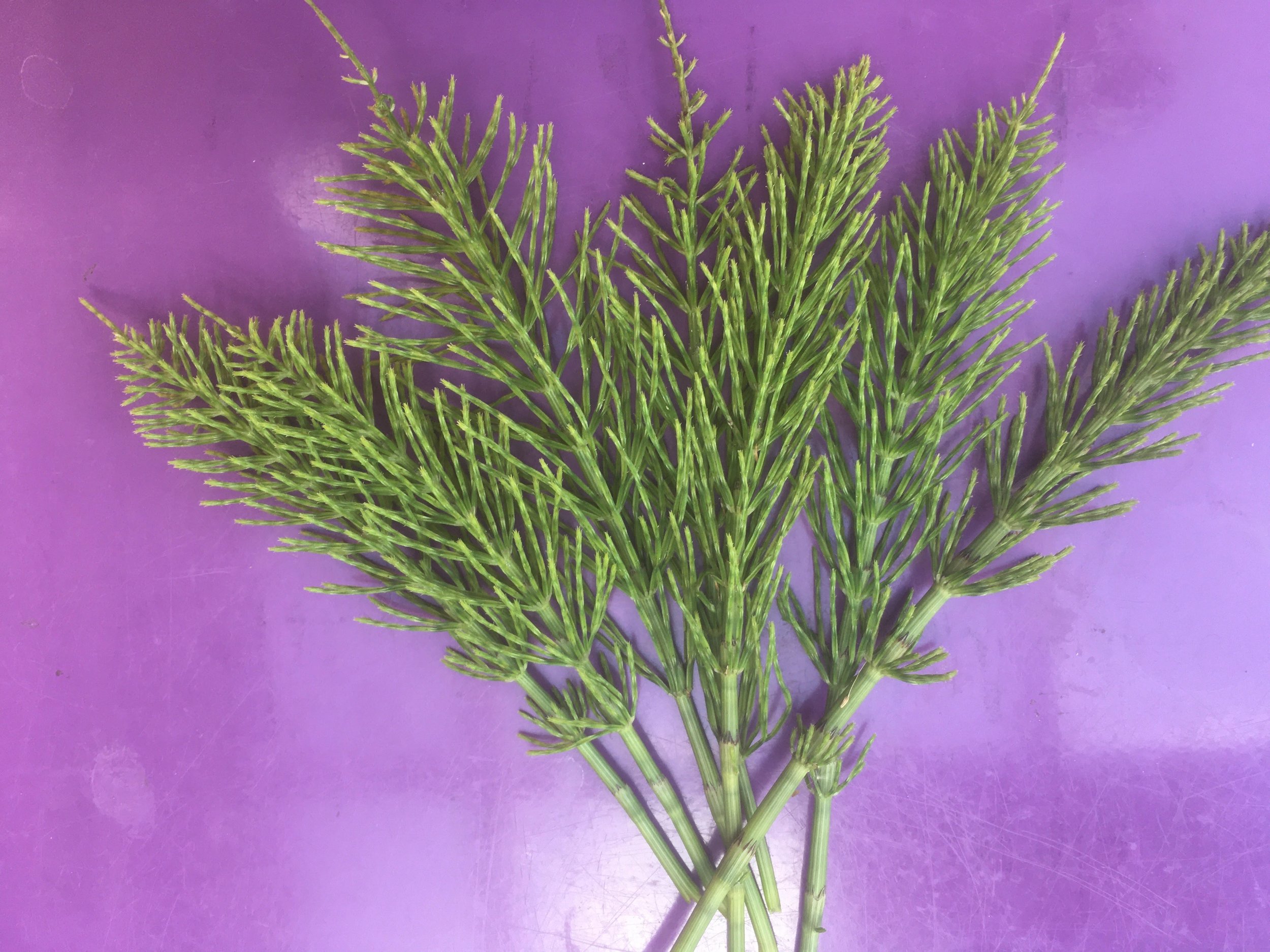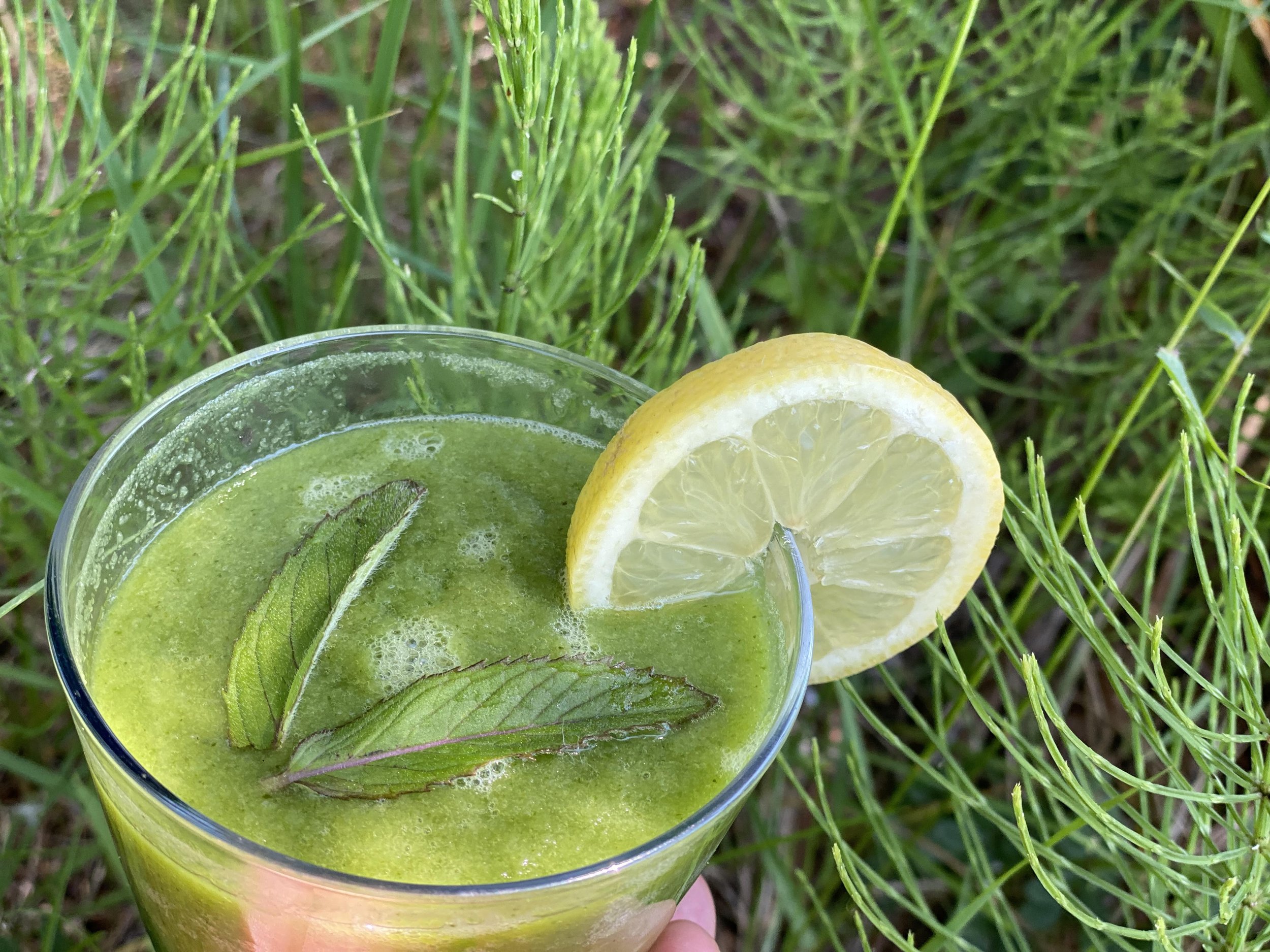Horsetail – Equisetum Arvense
COMMON NAMES: Mare’s Tail, Shave Grass, Bottle Brush, Pewterwort, Snake’s Pie, Fairy Spindle, Paddock’s Pipes, Cat’s Tail and Joint Grass.
Irish: Scuab eich ghoirt German: Ackerschachtelhalm French: Equisette Spanish: Belcho Italian: Rasperella, Chinese: Wen-ching
History
Horsetail can be called the granddaddy of plants, a plant left over from prehistoric times, a direct descendant of the late Paleozoic area (419-299 million years ago), which could grow up to 100 feet. Today, instead of a towering giant whose lofty tops are nibbled by Dinosaurs, horsetail is a modestly growing perennial found growing throughout temperate regions of the world.
Habitat
Horsetail is a native to Europe, North Africa, northern Asia and America, some species are found in the tropics where they can grow to a considerable size. It prefers damp soil. Usually never cultivated; it is often a troublesome weed, spreading as much by its creeping rootstock as by spores.
If grown in open ground unconfined, horsetail becomes a permanent inhabitant and is only eradicated with great difficulty. In no dig gardening continuous mulching will keep it under control. Its root systems have been found to extend down a cliff face 12m and breaking the rhizomes stimulates buds on the remainder to sprout and produce more growth.
Horsetail should not be introduced into the garden at all, it is best to find horsetail in the wild for harvesting. It may be confined in a strong container partially sunk into the ground. Leave the rim visible so that the rhizomes cannot penetrate or creep over the top. This is with caution!
Horsetail is pest and disease free.
What is it good for
Horsetail is mineral rich, it is especially known for its high concentration of silica, which supports collagen synthesis and calcium uptake. It therefore aids in the regeneration of bones and connective tissue for better joint health and strengthens nails, hair and skin. It is also prized as a wound healing herb and soothing remedy for bladder and kidney issues.
Generally considered save for humans, in large amounts it can be toxic to animals.
Medicinal uses
A lotion of horsetail can be used for irritated skin conditions such as eczema, to heal cuts and wounds, sores and ulcers, and to apply to chilblains. A mouthwash and gargle can be used for mouth ulcers, bleeding gums and sore throats.
A footwash with a little decoction of horsetail is most efficient for cracked feet, athlete’s foot and fungal diseases. It is particularly good for sweaty feet.
A simple method of improving easily broken nails is to immerse the finger tips in a decoction made by simmering 50 g of dry or fresh herb in 900 ml of water for 20 minutes..




